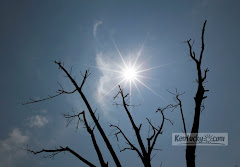Reporting on hydraulic fracturing of deep shale for natural gas earned several reporters recognition in the 2012 Environmental Journalism Awards competition of the Society of Environmental Journalists. Other rural-oriented winners reported on other extractive industries, pesticide drift and patented seeds.
Ten reporters at the Denton Record-Chronicle in Texas won the Kevin Carmody Award for in-depth reporting in a small market for “Citizens of the Shale,” a series that helped prompt the Texas legislature to requiring public disclosure of fracking chemicals and water use.
Mike Soraghan of Energy & Environment News won third place in outstanding beat reporting in a large market for his stories in Greenwire and The New York Times on the shale drilling boom. The entries were "Baffled About Fracking? You’re Not Alone;" "Big Mac Is King in N.D. Energy Boom, but Other Businesses Struggle to Keep Up;" In Fish-Kill Mystery, EPA Scientist Points at Shale Drilling;" "Earthquakes Erode Support for Drilling, but They're Nothing New;" and What EPA Really Said About Wyo. Fracking Pollution."
Second place in the small-market category went to Shauna Stephenson of the Wyoming Tribune Eagle for reporting on the Niobrara oil play; third place went to Clare Howard of 100 Reporters for "Downwind: Big ag at your door," about pesticide drift.
First prize for outstanding beat reporting in a small market went to Matthew S. Frank of the Missoula Independent and High Country News; second place went to Sandra Hausman of WVTF, the public radio station at Virginia Tech, for a wide range of stories, including one on fracking. The Columbia Journalism Review's Curtis Brainard won third place for a series titled "Environmental Journalism Under Fire." For links to those entries, click here.
In feature reporting, Paul Salopek won third place for “Closed-Source Crops” in Conservation magazine, which the judges called "a frightening and thought-provoking story that explores how multinational corporations have become the equivalent of the 'new seed oligarchy' in the agricultural world and how their practices and controls threaten biodiversity and food security." This category was won by Meera Subramanian for “India’s Vanishing Vultures” in the Virginia Quarterly Review. It "tells the story of an important but little-known ecological event, the sudden and rapid collapse of vulture populations in India in recent years." The story is here.
 |
| Photo: Barron Ludlum, Record-Chronicle |
Mike Soraghan of Energy & Environment News won third place in outstanding beat reporting in a large market for his stories in Greenwire and The New York Times on the shale drilling boom. The entries were "Baffled About Fracking? You’re Not Alone;" "Big Mac Is King in N.D. Energy Boom, but Other Businesses Struggle to Keep Up;" In Fish-Kill Mystery, EPA Scientist Points at Shale Drilling;" "Earthquakes Erode Support for Drilling, but They're Nothing New;" and What EPA Really Said About Wyo. Fracking Pollution."
Second place in the small-market category went to Shauna Stephenson of the Wyoming Tribune Eagle for reporting on the Niobrara oil play; third place went to Clare Howard of 100 Reporters for "Downwind: Big ag at your door," about pesticide drift.
First prize for outstanding beat reporting in a small market went to Matthew S. Frank of the Missoula Independent and High Country News; second place went to Sandra Hausman of WVTF, the public radio station at Virginia Tech, for a wide range of stories, including one on fracking. The Columbia Journalism Review's Curtis Brainard won third place for a series titled "Environmental Journalism Under Fire." For links to those entries, click here.
In feature reporting, Paul Salopek won third place for “Closed-Source Crops” in Conservation magazine, which the judges called "a frightening and thought-provoking story that explores how multinational corporations have become the equivalent of the 'new seed oligarchy' in the agricultural world and how their practices and controls threaten biodiversity and food security." This category was won by Meera Subramanian for “India’s Vanishing Vultures” in the Virginia Quarterly Review. It "tells the story of an important but little-known ecological event, the sudden and rapid collapse of vulture populations in India in recent years." The story is here.



















